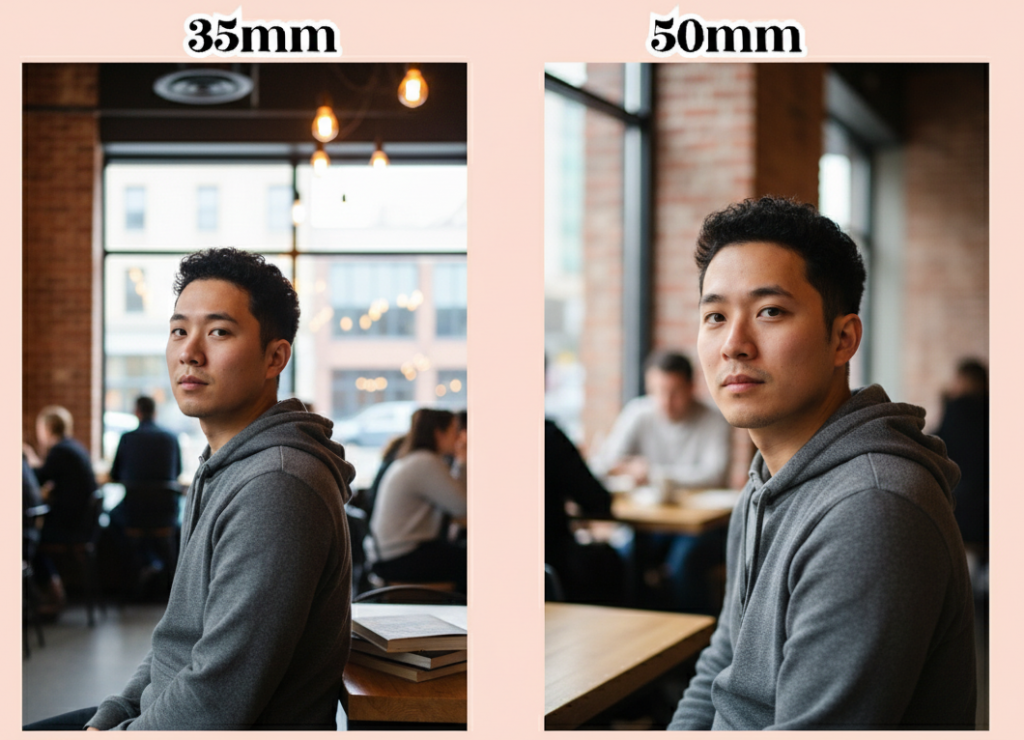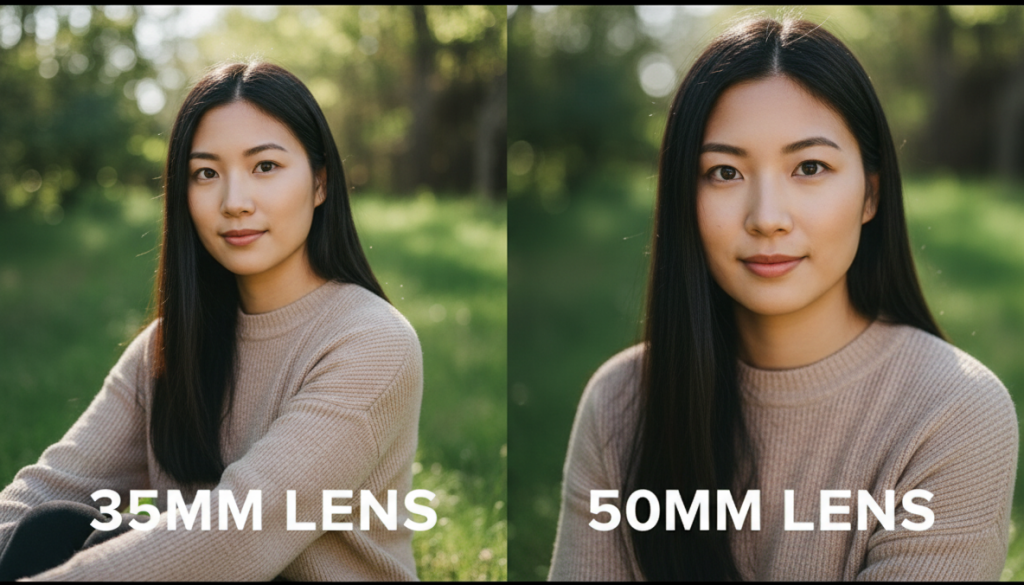In the world of photography – where new gadgets and optical systems keep emerging – the question often arises: which lens is the most versatile? While many praise the 50 mm lens, videographer Rebecca Kowalski argues in her video that the 35 mm lens may be the most versatile, practical, and creative choice for any photographer.
This lens is often referred to as the “Goldilocks” focal length -“not too wide, not too narrow – just right.” Embracing the “One Lens” challenge with a 35 mm lens can bring freedom, creativity, and striking consistency to your images.
Why 35 mm Is the “Golden Middle” in Optics
The 35 mm lens closely mimics the field of view of human vision, including peripheral vision.
-
Telling a story: It’s wide enough to capture the surrounding context and tell a story without resorting to the distortions of ultra-wide lenses.
-
Maintaining isolation: It’s narrow enough to isolate a subject, yet still place them within their environment.
-
Creating atmosphere: The image feels intimate but not claustrophobic; expansive but not empty.
Thanks to these qualities, the 35 mm lens has become legendary among photojournalists and street photographers like Henri Cartier-Bresson.
Practical Advantages and Discreetness of the 35 mm
One of the biggest advantages of a 35 mm lens is its practicality, especially in tight spaces:
-
Shooting in constrained spaces: You can shoot in a café, a small room, or a narrow street without having to step back to the wall like you often do with a 50 mm lens.
-
Genre versatility: It works for portraits, street and landscape photography, events, and even food photography.
-
Compactness and stealth: Most 35 mm primes are very small and lightweight. This allows the photographer to blend into the crowd and not look like a professional — which is crucial for capturing candid, authentic shots.
This psychological closeness causes the photographer to engage with the environment, creating more authentic and emotionally rich images.
Creative Possibilities: Depth, Context, and Low Light
The 35 mm lens opens up unique creative opportunities:
-
Depth and layers: The wide field of view allows you to include multiple layers (foreground, midground, background) in one composition, creating depth and visual interest — which is harder to achieve with longer focal lengths.
-
Contextual portraits (environmental portraits): The lens is ideal for portraits where the subject’s surroundings are part of their story. You can capture someone in their studio or workspace in a single frame.
-
Low-light performance: Many 35 mm lenses have fast apertures (f/1.4, f/1.8, f/2.0). This allows you to shoot in dimly lit restaurants or on night streets while maintaining image clarity without excessively raising ISO.
Drawbacks: When 35 mm Falls Short
Despite its versatility, 35 mm is not perfect for every scenario:
-
Traditional head-and-shoulders portraits: When shooting classic close-up portraits, a 35 mm may cause facial distortion — the nose might look larger, the face wider than with a longer lens. For these, 50 mm or 85 mm are usually better.
-
Strong subject isolation: Achieving heavy background blur (strong bokeh) and shallow depth of field is tougher with 35 mm compared to longer focal lengths.
-
Distance requirements: The 35 mm lens often requires you to be physically closer to your subject. It’s less suitable for wildlife, sports, or any situation where you need to maintain distance.
-
On crop-sensor cameras: A 35 mm on APS-C behaves like ~50 mm or more in full-frame terms — meaning you lose some of the “wider” field-of-view advantage.
Tips to Maximize Your 35 mm Lens
If you decide to take on the “One Lens” challenge, use these tips to make the most of your 35 mm:
-
Get closer: The biggest mistake is standing too far away. Don’t be afraid of discomfort — the strongest shots often come when you’re almost uncomfortably close to the subject.
-
Use the whole frame: Don’t always center your subject. Employ the rule of thirds, use leading lines to create balance, and include additional elements in the scene.
-
Include the context: Don’t always strive for maximum background blur. Let the environment tell part of the story.
-
Use f/8 or f/11 for street/landscape shooting: This gives you great depth of field, from a few feet to near-infinity, and removes constant need to refocus.
-
Work with layers: Always think about foreground, midground and background. Place elements at different distances from the camera to create depth.
Conclusion
The 35 mm lens is a versatile, lightweight, and unobtrusive tool that could become your go-to choice. It forces you to interact with your scene and subjects — not just fixate them. If you want to simplify your gear, develop your photographic vision, and produce images that feel “real,” try shooting with only a 35 mm lens for a week – you might be surprised what you can create.

